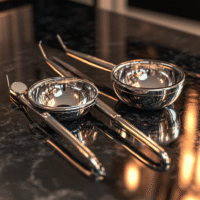Understanding the Trial Results
This study looked at a new device called the TENA SmartCare Change Indicator, which helps nursing home staff manage urinary incontinence (UI) better. Here’s what we found:
What Worked?
- The device helped save time in caring for residents. Staff using the device spent about 30 minutes less each day on changing pads compared to those using regular methods.
- Residents who had the device experienced better sleep and used fewer pads, which means less disruption during the night.
What Didn’t Work?
- The study did not show any improvement in skin health, which was one of the main goals.
- While the device helped with time management, its overall effectiveness in improving care was unclear.
How Does This Help Patients or Clinics?
By using the TENA SmartCare Change Indicator, nursing homes can improve the efficiency of care for residents with urinary incontinence. This means better use of staff time and potentially happier residents due to better sleep and comfort.
Real-World Opportunities
- Nursing homes can adopt the TENA SmartCare device to help staff manage urinary incontinence more effectively.
- Training sessions can be organized for staff to learn how to use the device properly.
Measurable Outcomes
- Track the time spent on continence care before and after using the device.
- Monitor the number of pads used and the quality of sleep for residents.
- Assess skin health regularly to see if there are any changes.
AI Tools to Consider
Consider using AI tools that can help analyze data from the device, track care efficiency, and predict when a change is needed. This can further enhance care management.
Step-by-Step Plan for Clinics
- Start Small: Begin with one nursing unit to test the TENA SmartCare Change Indicator.
- Train Staff: Provide training on how to use the device effectively.
- Monitor Outcomes: Track time spent on care, pad usage, and resident sleep quality.
- Evaluate and Adjust: After a month, review the results and make necessary adjustments before expanding to other units.
For more details about this research, you can find it here: Ageing Journal Research.
























